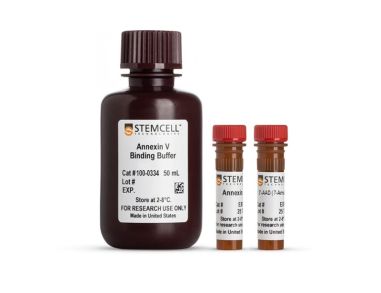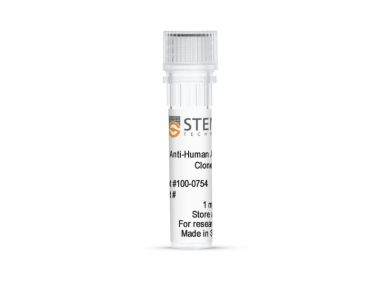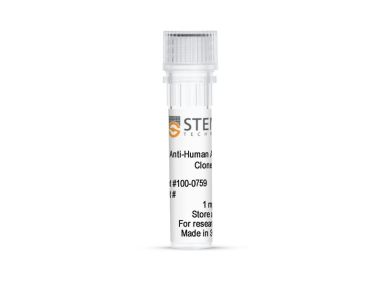搜索结果: 'methocult media formulations for human hematopoietic cells serum containing'
-
 Annexin V凋亡检测试剂盒,含7-AAD 细胞凋亡染色及检测试剂盒
Annexin V凋亡检测试剂盒,含7-AAD 细胞凋亡染色及检测试剂盒 -
 Annexin V结合缓冲液 用于Annexin V标记的缓冲液
Annexin V结合缓冲液 用于Annexin V标记的缓冲液 -
 Annexin V 一种检测凋亡细胞的细胞蛋白
Annexin V 一种检测凋亡细胞的细胞蛋白 -
 抗乙酰化α-微管蛋白(乙酰基K40)抗体,clone TEU318 抗人、小鼠、大鼠乙酰化α-微管蛋白(乙酰化K40)的小鼠Monoclonal IgG1抗体
抗乙酰化α-微管蛋白(乙酰基K40)抗体,clone TEU318 抗人、小鼠、大鼠乙酰化α-微管蛋白(乙酰化K40)的小鼠Monoclonal IgG1抗体 -
 抗β-微管蛋白III抗体,clone AA10 抗人、小鼠、大鼠β-球蛋白III的小鼠Monoclonal IgG2a抗体
抗β-微管蛋白III抗体,clone AA10 抗人、小鼠、大鼠β-球蛋白III的小鼠Monoclonal IgG2a抗体 -
 抗β-微管蛋白III抗体,clone TUJ1 抗人、小鼠、大鼠β-球蛋白III的小鼠Monoclonal IgG2a抗体
抗β-微管蛋白III抗体,clone TUJ1 抗人、小鼠、大鼠β-球蛋白III的小鼠Monoclonal IgG2a抗体 -
 抗右旋糖酐抗体,clone DX1 抗右旋糖酐小鼠Monoclonal IgG1抗体
抗右旋糖酐抗体,clone DX1 抗右旋糖酐小鼠Monoclonal IgG1抗体 -
 抗GFAP抗体,clone 2E1.E9 抗人、小鼠、大鼠胶质纤维酸性蛋白(GFAP)的小鼠Monoclonal IgG2b抗体
抗GFAP抗体,clone 2E1.E9 抗人、小鼠、大鼠胶质纤维酸性蛋白(GFAP)的小鼠Monoclonal IgG2b抗体 -
 抗GFAP抗体,Polyclonal 抗人、小鼠、大鼠胶质纤维酸性蛋白(GFAP)的兔Polyclonal抗体
抗GFAP抗体,Polyclonal 抗人、小鼠、大鼠胶质纤维酸性蛋白(GFAP)的兔Polyclonal抗体 -
 抗人ACE2抗体,clone AC18F 抗人血管紧张素转换酶2 (ACE2)的小鼠Monoclonal IgG1抗体
抗人ACE2抗体,clone AC18F 抗人血管紧张素转换酶2 (ACE2)的小鼠Monoclonal IgG1抗体 -
 抗人ACE2抗体,clone AC384 抗人血管紧张素转换酶2 (ACE2)的小鼠Monoclonal IgG1抗体
抗人ACE2抗体,clone AC384 抗人血管紧张素转换酶2 (ACE2)的小鼠Monoclonal IgG1抗体 -
 抗人β-微管蛋白III抗体,clone 2G10-TB3 抗人、小鼠、大鼠β-微管蛋白III的小鼠Monoclonal IgG2a抗体
抗人β-微管蛋白III抗体,clone 2G10-TB3 抗人、小鼠、大鼠β-微管蛋白III的小鼠Monoclonal IgG2a抗体


 EasySep™小鼠TIL(CD45)正选试剂盒
EasySep™小鼠TIL(CD45)正选试剂盒





 沪公网安备31010102008431号
沪公网安备31010102008431号